About
W.F. Umi Hsu (pronouns: they/them) writes here to reflect on the intersection among ethnography, civic innovation, and the arts, and on their research of urban sounds and music.Tags
APA music Asian American CDLR civic tech coding community arts critical making cyberpunk digital diaspora digital ethnography digital ethnomusicology digital humanities digital pedagogy dissertation DIY culture dzian! ethnography ethnomusicology experiment field notes Hakka Los Angeles M.I.A. mapping Movable Parts music in Asian America nakashi Obama Paperphone Pinko Communoids public scholarship race scholars lab SEM sound ethnography soundscape SPINearth Taiwan taqwacore The Kominas transnational video youtube 吳盛智 張震嶽
Tag Archives: field notes
fieldnotes research researchFieldnotes from Taiwan, Part I: Day Market and Nakashi Cassette Culture
September 15, 2012 – 6:03 pm
This is part one of a series of field notes of my project on nakashi, a postcolonial itinerant music-culture in Taiwan. I will publish the “Fieldnotes from Taiwan” series in parts.
———————————————————————————————
TWO MONTHS!! It’s been taken me more than two months to unpack from my trip to Taiwan. I finally got around to look at the last unpacked item: a dozen of nakashi cassette tapes enwrapped inside two pink-and-white-striped plastic bags. I haven’t listened to these tapes; and frankly, I haven’t had any desires to unwrap this bag of goodies.
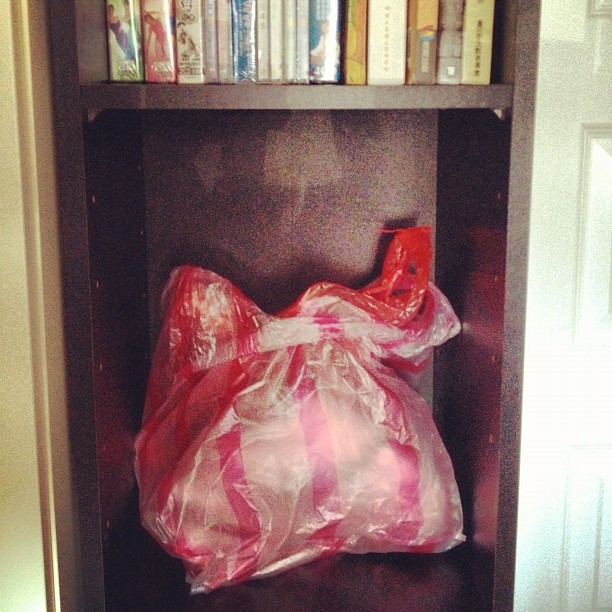

The plastic bags themselves remind me of the field encounters I had this summer. The plastic bags not only represent a kind of Taiwanese local street culture that is sometimes associated with the working-class; but they also provide a clue for my quest for the meaning of nakashi in contemporary Taiwan. Here how it all unfolds.
I spent a quite bit of time wandering in the Wuxing Day Market (吳興市場, a great photo series). This is partly because my dad’s dental office is located literally inside the day market that runs from daybreak until about noon. Day markets in Taiwan are a kind of street-based “traditional markets” (傳統市場) that are set up in an semi-ad-hoc manner. Day markets are where mobile produce and meat vendors set up their stands. These vendors transport their goods in vans and oftentimes in blue pick-up trucks from one location to another based on the day of the week. Butchers hang their meats; vegetables come in crates; poultry sometimes come as live animals. Occasionally you would find dried goods, cooked food, and other living essentials like socks, underwear, and leisurely goods like music and movies. The vendor stands usually have no refrigeration; but are generator-powered to run electricity for lighting and background music. Music and recorded sales pitches project from boomboxes and loudspeakers. The day market is a great example of the Chinese notion of renao (熱鬧), liveliness, hustling, or bustling.
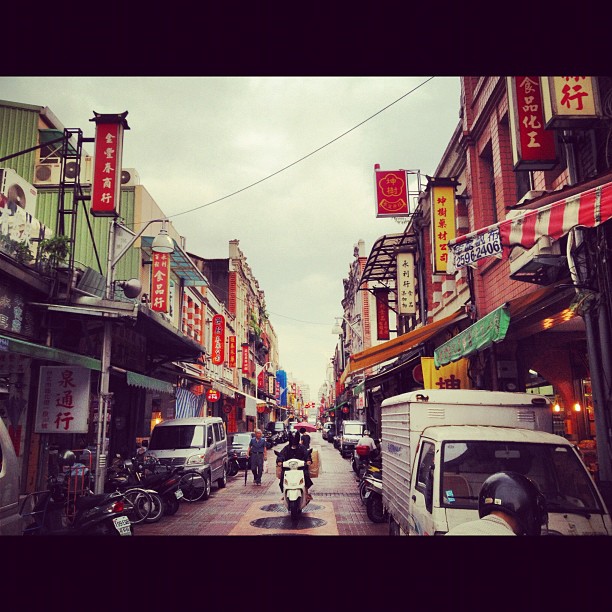
Bargaining is a common practice at the day market. The social and economic structure of the day market is complex and it seems quite distinct from the rest of rationalized system in Taiwan that is either state-sanctioned or corporatized. A more visible counterpart to the day market is the night market, which appeals to young people and has become an emblematic symbol of Taiwan in the overseas communities. In contrast to convenience stores and super markets, both associated with the urban elites, the majority of the clientele of the day market are the economically underprivileged, notably lower-middle-class housewives and the elderly. I got a glimpse of the day market because of an incidental interaction I had with a music vendor.
On a sultry early afternoon, I wandered downed Wuxing Street as the vendors at the day market were packing up. I spotted a music stand. From an empty storefront, this vendor stand extended via a line of adjacent folding tables. What caught my eyes was a box of cassette tapes, a medium rather uncommon in contemporary Taipei. I exclaimed, internally and loudly while trying to maintain my coolness so as to not appear as a visitor, “These are the nakashi tapes that I’ve been looking for!” These tapes contain mostly instrumental tracks of popular songs from the repressed genre of Taiyuge, meaning “Taiwanese language songs.” These songs are sung in Taiwanese Hokkien dialect that originated in southern China. While a large part of this repertoire consisted of Taiwanese reinterpretation of Japanese enka songs, a subset of these songs came out of the 1930s recording industry during the Japanese Occupation era. While most of these tapes contain instrumental tracks, some of them are “greatest hits” compilations of full (vocals included) tracks of the same repertory.
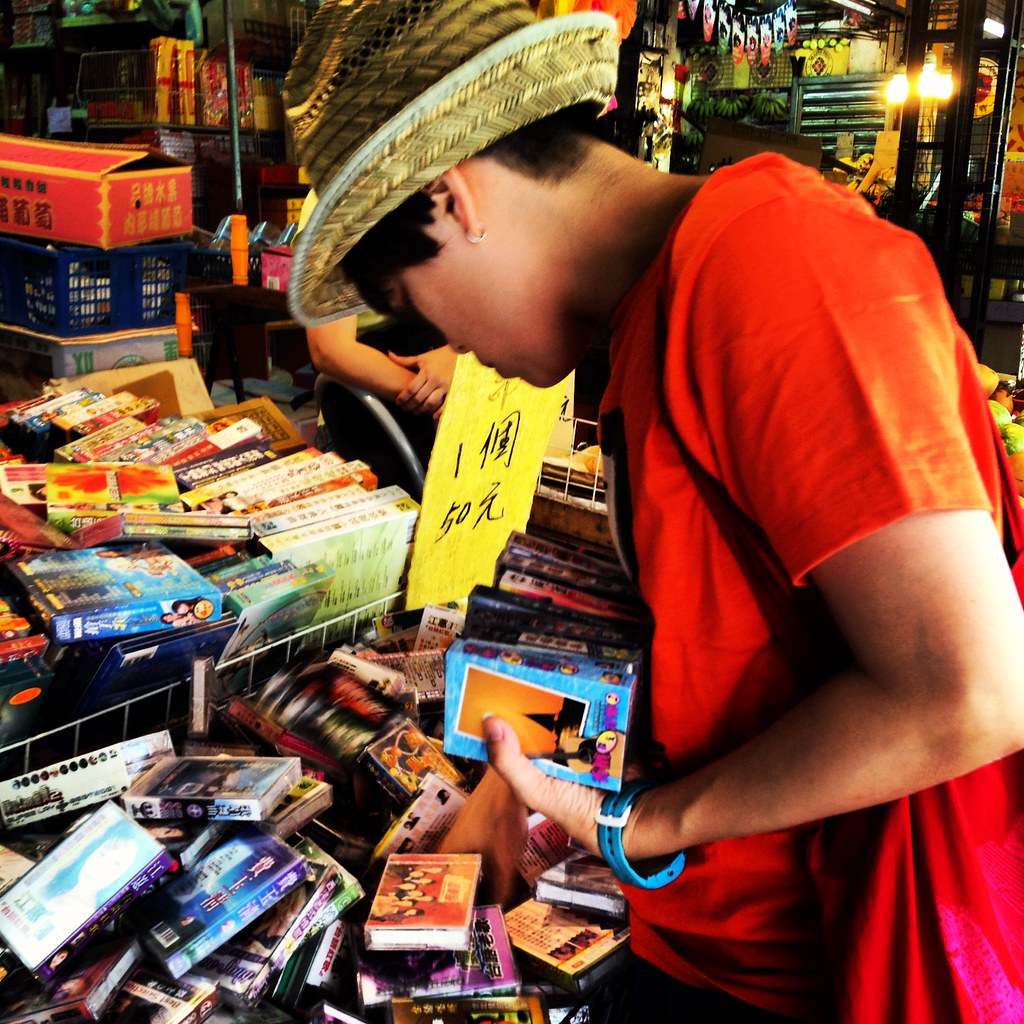
I was surprised to see that these tapes were not covered in dust. I asked the woman vendor, who appeared to be in her 40s, “Do people still listen to these tapes?”
“Of course! Taxi and truck drivers listen to these because many of the commercial vehicles are equipped with cassette decks still. And of course, baba and mama (“dads” and “moms”) listen to tapes because they haven’t switched over to CDs. But we sell everything and we have something for everyone here,” she explained.
“Oh, I didn’t know that! But that makes a lot of sense. I like these tapes because of the music.” I looked in the box and picked out 8 or so tapes.
“Yea, we carry a lot of things that are hard to find these days. Here, go ahead and pick out a couple more tapes. I’ll give you a discount. Buy ten get one free!”
I thanked her profusely and she put the tapes inside a pink-and-white-striped plastic bag. These bags are the generic plastic shopping bag in Taiwan. They are often used by market vendors probably because they are inexpensive and sturdy. I remember them from my grandparents’ grocery story inside the Nanmen Day Market (南門市場) near Chiang Kai-Shek Memorial.
I paid the lady and scurried away. It was 1:30pm in the afternoon. The pacific heat wave on a small island near the tropics was brutal. I had a plan to cool off inside Taipei 101, Taiwan’s architectural pride, also a symbol of its financial power. The subtropical heat and island humidity got to me. By the time I walked to the Starbucks inside the upscale, super-air-conditioned mall that’s attached to Taipei 101, my head was spinning. I sat down to work on a conference paper. Afterwards, I trotted over to the Eslite Bookstore, an elite mega book seller in Taiwan, seeking a relieve from the heat and got dinner. I eventually made it through the hottest time of day and got back to my dad’s apartment only to discover that my bag of tapes was missing.
I subsequently spent the next day tracing my steps through the day market and the upscale Xinyi district near Taipei 101 looking for my nakashi tapes. At the day market, I saw no traces of the music vendor. Their spot was occupied by a vegetable stand.
Hilarity ensued when I approached the staff members at Starbucks, Taipei 101, and Eslite to inquire about my lost nakashi tapes. The attendant that I talked to at Taipei 101 asked what kind of “shopping bag” my nakashi tapes were in. I told her that it was a just ordinary pink-and-white-striped kind. She seemed mystified that such an ordinary item would appear inside this fancy shopping mall. The contrast between a kind of underclass localism, associated with the ordinary plastic bag, and an acclaimed architectural symbol of transnational financial power, seemed ludicrous.
The sales representative at the Eslite Bookstore was similarly perplexed by my request to find cassette tapes, which seemed so out of her framework of a multilingual mega book and music store, with a massive online store, that carries titles ranging from imported arts magazines from the United Kingdom to Chinese-language academic books on prewar music in Taiwan. The ostensibly comprehensive music section inside the Eslite building didn’t have any music recordings that would fall into the genre of nakashi. There were, in fact, no analog cassettes in stock. Instead, I encountered was a giant glowing hipster-y display constructed out of cassette tapes. Hipsters in Taipei are apparently not vinyl- or cassette-crazy. [Not yet, at least.] Needless to say, I didn’t find my tapes that day; but I learned much about the physical and symbolic separation between these two worlds.
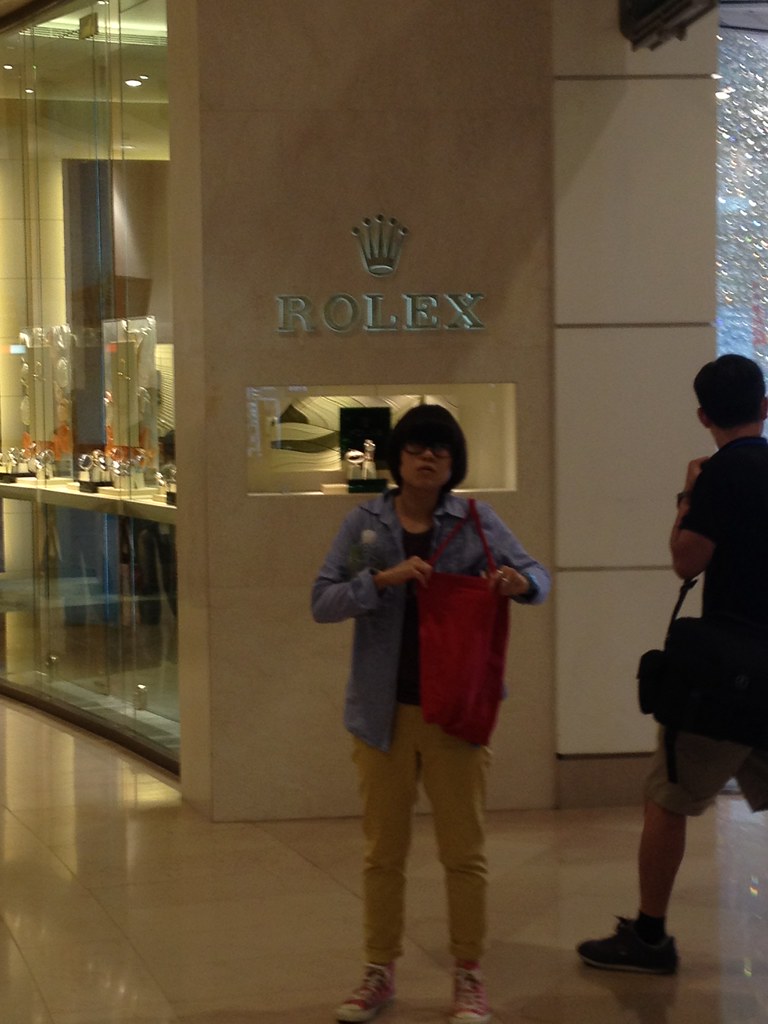
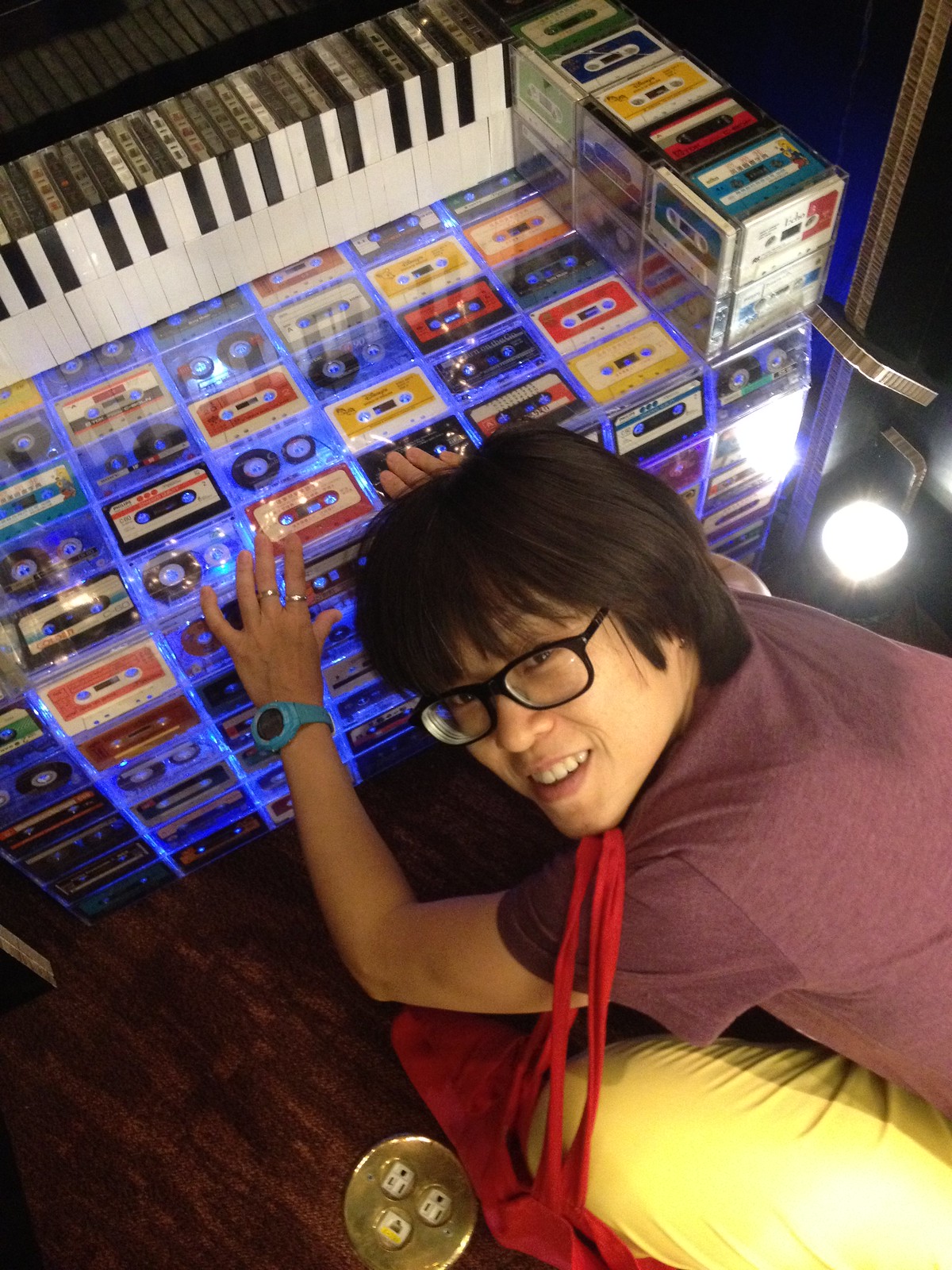
I had a faint memory of the music vendor’s fluid schedule – every Tuesday or Wednesday, or “sometimes every other week.” We went back to the day market the following week. The stand was there, as if it never moved. The tapes were still there, the same sales staff, one woman and a man, working diligently.
The woman said to me, “I was worried that you weren’t coming back. I saved your tapes, but left them in the van. Go ahead and pick out eleven tapes. Here, we do ethical business. We sold you some things, and now they belong to you. We will not scam you.” Rest assured, I found more tapes and got a bag more goodies (including nakashi instrumental CD sets that feature shamisen and instrumental music for square dancing).
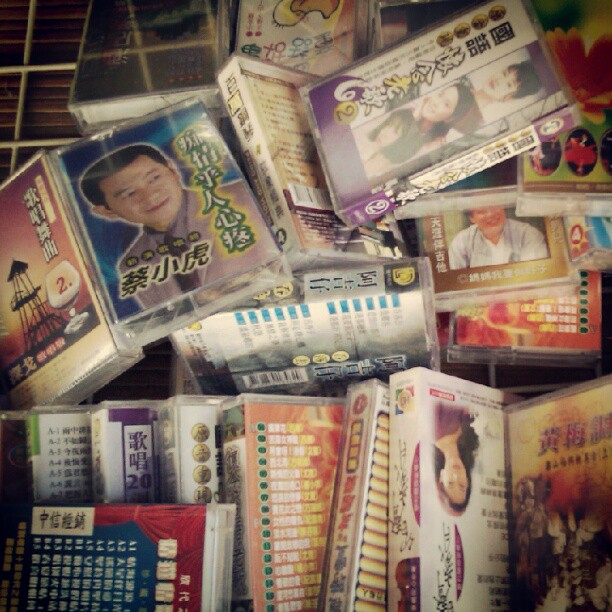
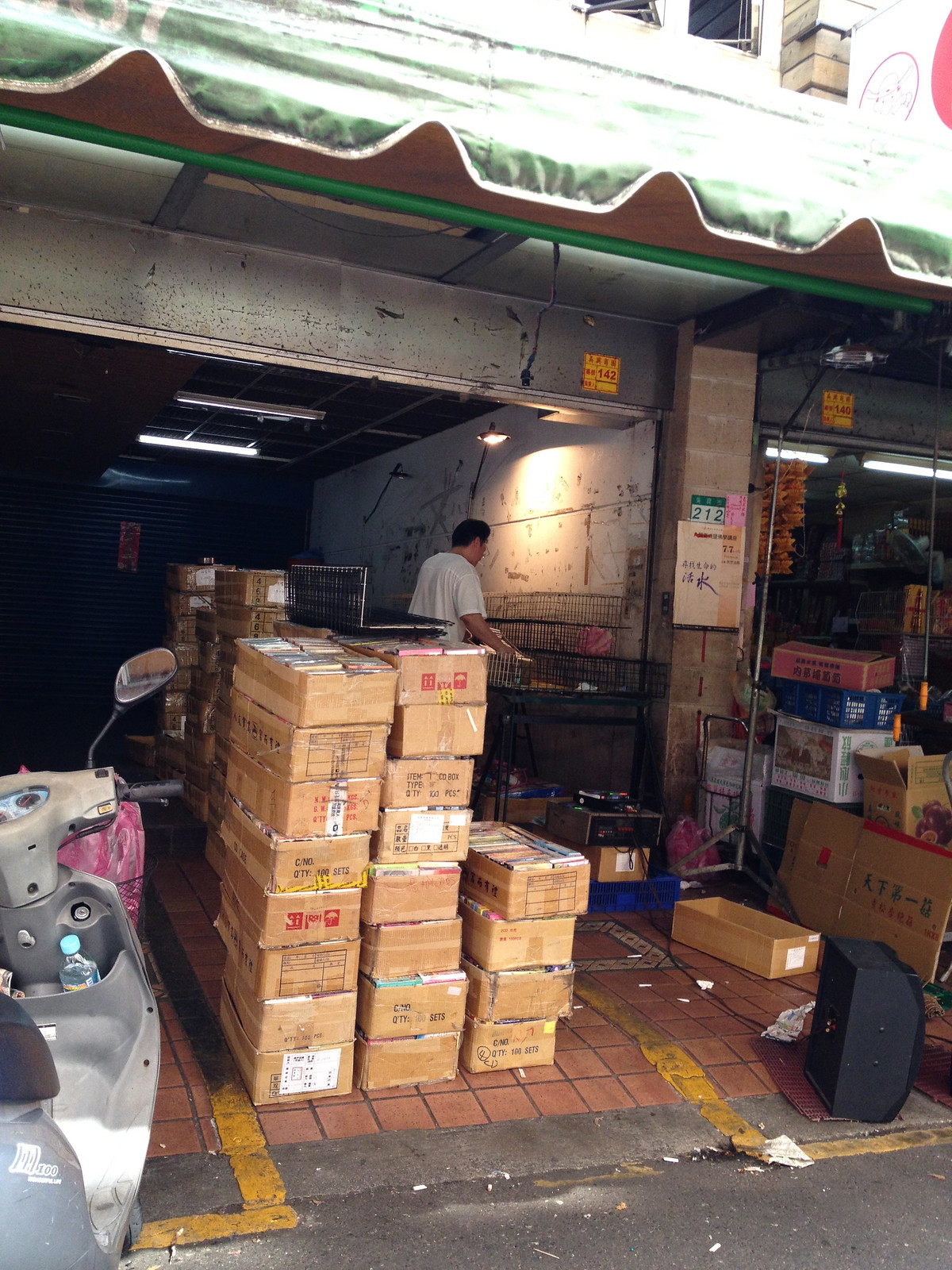
Now that I’m done speculating about the meaning of the plastic bags, I think I’m ready to listen to the tapes that are inside the bags. There is much to be unfolded about the Wuxing Day Market. There is a bit of nakashi magic — quiet but lively — happening in the area. An old-school music store run by a nakashi musician [that I blogged about from my last trip] is right down the street. Through acquiring and losing these tapes, I witnessed a social intimacy between this analog music-culture, the hustling and bustling and the fluid economy at the day market, and the dynamics of the elderly generation and the cab-and truck-driving working-class in Taiwan. I look forward to finally listening to these tapes. Perhaps it will help me unwind this cluster of meanings regarding place, music, and economy.
Memories from the Fourth: The Kominas Collaborate with Like-Minded Hip Hop Artists
July 31, 2009 – 5:52 pm
I’m still blown away by the memories and sounds left over from that night.
I had the privilege to partake of the intense collaborative moments between the Boston-based Kominas and their para-Muslim-identified compatriot hip hop acts The M-Team and Amir Sulaiman. The event was “the 4th of July New Muslim Cool Screening, Jam Session and BBQ.” An offshoot of the annual meeting of ISNA (Islamic Society of North America), this even took place at St. Stephen and the Incarnation Episcopal Church in northwest Washington DC.
Omar Waqar (of Sarmust and Diacritical) played a solo set pouring forth radiant love from his Sufi-inspired lyrical outcry. Basim Usmani came on stage and said, “there is the New Muslim Cool. But some people say that we are the ‘new Muslim bad.” The Kominas had a different lineup that evening with Basim and Shahjehan Khan on bass and guitar, respectively, and Imran Malik on drums. They blasted the church auditorium with spiritual blasphemy. “Par Desi” and “Sharia Law in the U.S.A.” resounded. The Kominas hardcore fans skanked, slam-danced. I spotted some taqwa-converts in the audience.
The Kominas then collaborated with the Brooklyn-based Latino Muslim hip hop duo The M-Team (featured in PBS documentary New Muslim Cool) and the saintly poet Amir Sulaiman from Atlanta. The Kominas backed up the MC’s providing intense live instrumental sounds. The members of the M-Team took turns rhyming contestational words about politics around faith and race. Sulaiman then took center stage pronouncing heavyweight words about spiritual battles and social unrest. The evening ended on an emotional highpoint. A congregation full of social misfits, however defined, shared and expressed life’s discontentment while swaying, dancing, hollering, throwing fists in the air all enveloped within a spiritual cacophony. The spirit was triumphant; the music elated.
More from this photo set.
———————————————————————————————————-
This post was originally posted on July 31, 2009 on SPINearth.
Who’s on tour: the have’s or the have-not’s?
October 4, 2007 – 9:13 am
There is a theoretical caveat that I can take with my project on touring musicians. As media technology develops in late-capitalist society, some theorists argue that the experiences of everyday life become more mediated. This assessment seems too simplistic to me. Besides the increasing access to mediated cultural material, the circulation of music recordings via the Internet, for instance, what comes with technological development is people’s mobility across geographical boundaries.
The politics implicated in mobility, however, should be qualified here a bit. Some movement patterns are induced by labor migration. Working-class migrant workers belong to this category where movement is voluntary only to an extent and is mostly based on economic necessities. On the other end of the power spectrum are people who move or travel out of leisure, i.e. tourists. In other words, motivation of movement or the social requisites for mobility are tied to the socioeconomic positions of the individuals.
Where do musicians fit in? Are musicians migrant (presumably working-class) workers, or are they more or less music-making tourists? According to my observations so far, many indie touring musicians fall somewhere in between. As the structure of the music industry becomes more conglomerated, there are fewer musicians out there signed to major labels. Thus fewer and fewer musicians have the funds provided by their labels to tour. In this sense, touring is no longer a means to sell records, the profit-driven end from the perspective of the record companies. Then what does touring mean to musicians who tour and subsist out of their own pockets, oftentimes the savings from a day job? Sometimes if you get lucky, and if you’re popular enough, you barely break even from ticket and merchandise sales.
To musicians working at this level of the (amorphous) music industry, touring often means a personal aspiration, whether this serves the end of fulfilling the “rock star dream” or “getting my music heard by real people”, or making social network for fans and other musicians. I think, what compels musicians to get out there is precisely the personal, oftentimes intimate (especially if you’re really indie and low-budget) connections established in the live music setting.
I’m personally guilty of some of these motivations. And our Pinko Communoids tour of Taiwan this past summer was certainly not funded by a record label (our CDR was released by our own “label”). Our very costly trans-Pacific tour to East Asia was funded by student loans (another perk of being in grad school) and university funds, combined with the gracious financial assistance from our friends and families. [If you’re curious, here’s a list of people who made our trip possible, some of whom offered financial support while others emotional support.]
So – back to the beginning, music as heard in the postmodern, late-capitalist, Internet-mediated age is not just highly mediated and impersonal. Music can only be experienced in intimate, live music performances by indie-level musicians on tour. Sure, this dream is not lived out by everyone musician of all social positions. Not everyone can afford a tour around the world (living expenses) and being off from work.
The issue of class is looming though other forms of inequalities can intersect with socioeconomic positioning. Not everyone can feel safe on the road – as there are still lots of social spaces that are quite dangerous to gender (yes, this includes women, still!!), sexual and ethnic minorities. Trust me.
————————————————————
This entry was originally posted on October 4, 2007 on Yellowbuzz.
Afterthought on “Are You Japanese?”
September 17, 2007 – 9:17 am
Here’s a little bit of afterthought on the “Japanese” ethnic capital in experimental or improvised music scene in the US. [Caution – this entry is slightly inflammatory.]
There’s a distinction between being racialized as Asian/Japanese and being understood as being from Japan as a place from where many renowned improv or experimental musicians are from. (Some of these figures include Merzbow, Yoshimaru Nakamura, Otomo Oshihide, and those associated with John Zorn and his label. Here’s a compiled list of some of these individuals.)
I should decompress this statement a bit. Being racialized implies an alignment with the historically Western Orientalist gaze on all people of non-Western features or otherwise known as “Eastern” or “Asian” affiliation. This perspective enables the lumping of all people of Asian descent into one large despite the ethnic, national, and class differences or sometimes conflicts among them. In the US, this perspective has much to do with the stereotype of “perpetual foreigner”, a cultural trope familiar to many of us living here. How many times have I been asked, “oh, where are you from?” If I said, “Virginia,” there would be another question that follows invariably, “but, no, which country are you REALLY from?”
In a slightly different way, being associated with the past and present internationally renowned Japanese musicians is not necessarily a racializing act. To some people, this could be a favorable or “positive” stereotype, although I do wonder how much mileage one gets from being associated with the particular line of Japanese artists. The issue of representation is a big deal in this day and age as movements toward equality seem to be motivated by multicuturalism. This doesn’t shun the possibility of tokenistic representation. After the implementation of Affirmative Action, the identity of Asian Americans conveniently slips in and out of the definition of “minority” depending on the context of representation. Asian Americans sometimes add a nice third color to the fortuitous representation of All-American racial harmony; other times, Asian Americans are called out for being “over-represented” (mostly because the Asian American presence simply overwhelms or even threatens the historically defaulted social dominance of Whiteness)
In real life, this distinction – between being racialized and being aligned with the renowned Japanese musicians – may be collapsed. On the part of the non-Asian observers, it doesn’t matter if the Asians or Asian Americans of ethnicities other than Japanese are grouped or lumped together. It’s not like the non-Asians can lose their social status by mistaking the national or ethnic association of a single individual, although there is the risk of breaching the implicit rules of social interactions and diplomacy, or just experiencing personal embarrassment.
On the other end, Asian/Asian American musicians can navigate the fine line between the two. There are a number of different approaches or strategies to this. Personally, I have a few different tricks in my bag depending on the situation. I sometimes handle the situation with a playful response. Other times, I put on my teacher’s hat that I patiently break down the historical, social, and cultural relationship between Japan and Taiwan. Well, occasionally I just ignore the questions. Most of time, I manage to make interesting small talks out of these inquiries about my “being from Japan” without breaching the rules of social interactions. However, I would rather talk about music, aesthetics, gear, etc, than my ethnicity. Maybe this particular experience can become a common ground for Asian/Asian Americans residing/working in the non-Asian world, despite our distinctive relationship to Japan and Japanese artists.
I would be interested in finding out how others manage this kind of encounter. Please get in touch with me [wendy.f.hsu@gmail.com] if you think you can contribute anecdotes or ideas to my rant/musing about ethnic (mis-)identification by strangers.
————————————————————————————————
This entry was original on September 17, 2007 on Yellowbuzz.
Asian-American or Asian-Transnational?
August 4, 2007 – 9:22 am
I’ve lost track of how long I’ve been browsing the web half-aimlessly. Perfect activity on a Saturday afternoon assaulted by 100-plus-degree heat. I’m looking for music events while planning for my research trip to New York next week. Myspace seems to be logical place to start as it highlights the local affiliations of musicians and music events.
This presents an curious encountering of an online-offline contradiction: regardless of how “virtual” the Internet environment is, people use this virtual social space to construct a sense of local belonging or ties. Not only that, while musicians have a permanent tie to a physical home base, many of them have a transient status of being “on tour” in regions of the US or the world.
I’ve noticed a particular pattern: many Asian American musicians, particularly those who perform in the format of an indie or rock band, are touring or have recently toured Asia. For instance, Asobi Seksu, a Brooklyn-based indie rock band fronted by Japanese American Yuki Chikudate, just finished their tour dates in Japan and Taiwan (last performance at Formoz Festival in Taiwan) in late July. Also, Johnny Hi-Fi, Taiwanese-American Eric Hsu’s Britpop-inspired indie band based out of New York, toured Taiwan, China, and Japan last September and are about to release a bilingual (English-Mandarin) album.
This makes me wonder if Asian American musicians could mobilize their Asian social connections or capital better than those non-Asian Americans. How much of the “Asian tour” has something to do with the personal connections that Asian American musicians have themselves, how much of it has to do with the ethnicity factor? Can ethnicity be translated into a form of social capital?
My speculation is not meant to discount the successful reception of American bands with Asian American members in Asia by all means. I’m sure that there are other reasons (such as a musical compatibility) for Asian listeners to dig music by Asian Americans. (Could this be the reason that Johnny Hi-Fi’s “Familiar Voices Pres…” reminds me of Taiwanese indie sound?)
My recent experiences of touring Taiwan with my band (Pinko Communoids) made me realize that without my personal connections to Taiwan, our dream of an “Asian tour” would be halted by a slew of logistical difficulties. Perhaps, with unsigned groups, the possibility of touring Asia would be augmented when a member of the group has some sort of personal or cultural connections to the country. The ability to speak the language and having distant relatives in other countries on a tour could facilitate the international communication and travel arrangement. Believe me, even with that, we still were warped into the alienating universe portrayed in Sophia Coppola’s Lost in Translation. Perhaps this is the kind of social contact that allows the identity of Asian-American and Asian-transnational to mutually reinforce each other.
If this is the case, why not? It’s not like Asians or Asian Americans dominate the music industry in either the US or the world.
————————————————————————————————————–
This entry was originally posted on August 4, 2007 on Yellowbuzz.
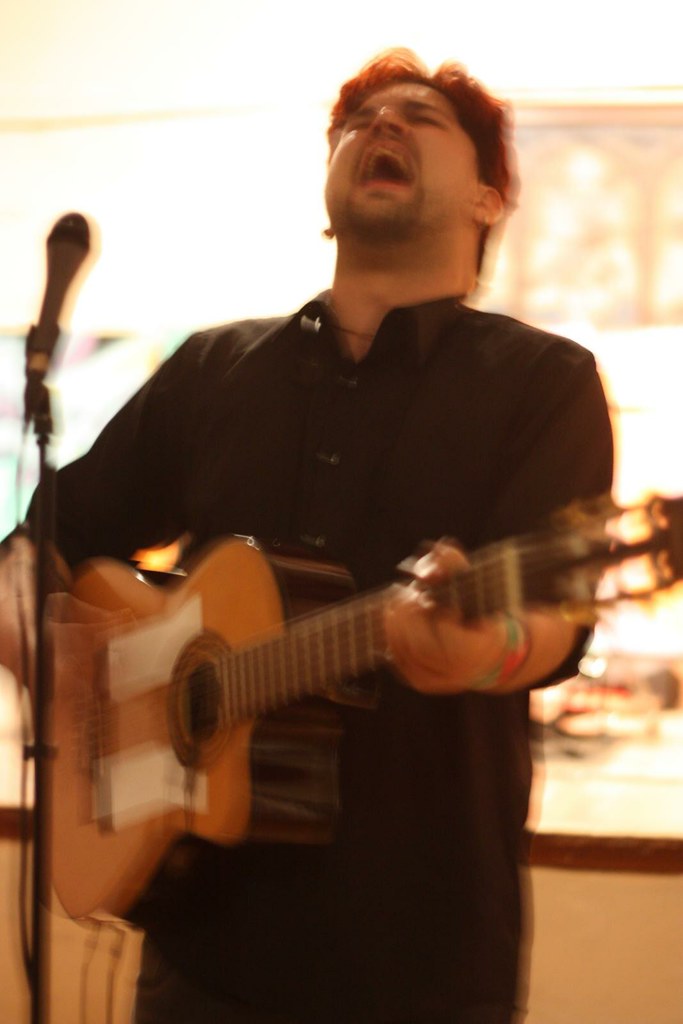

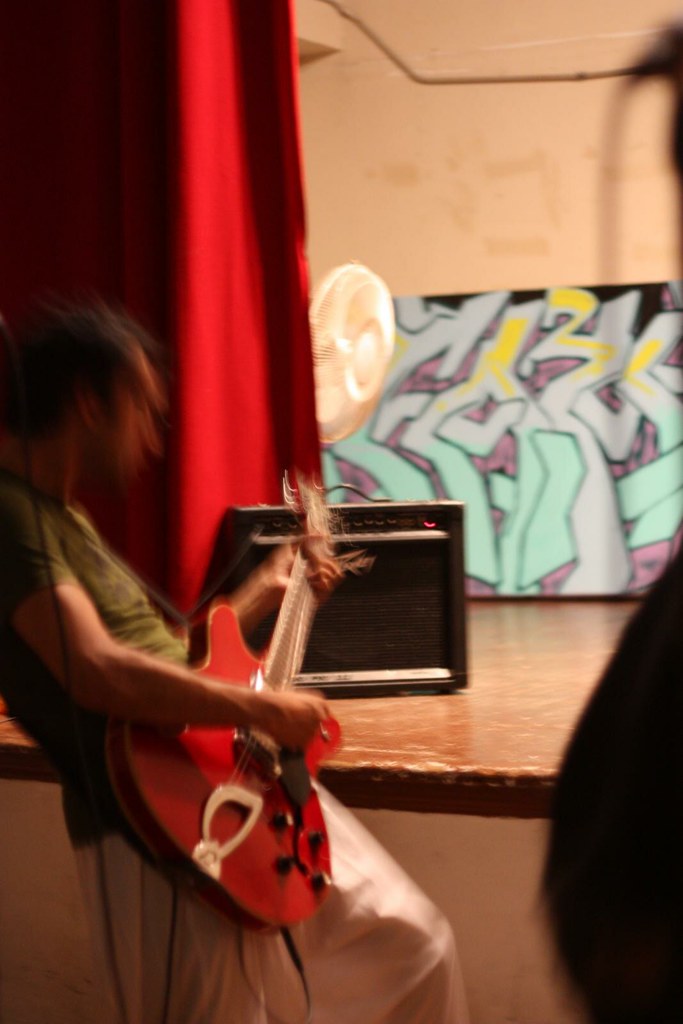

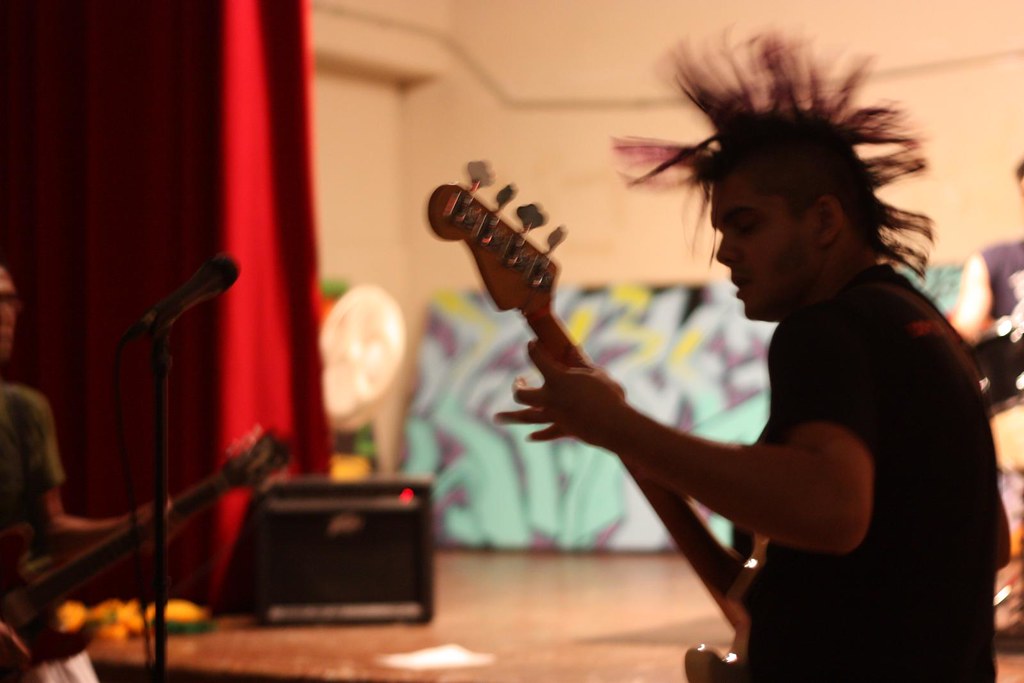
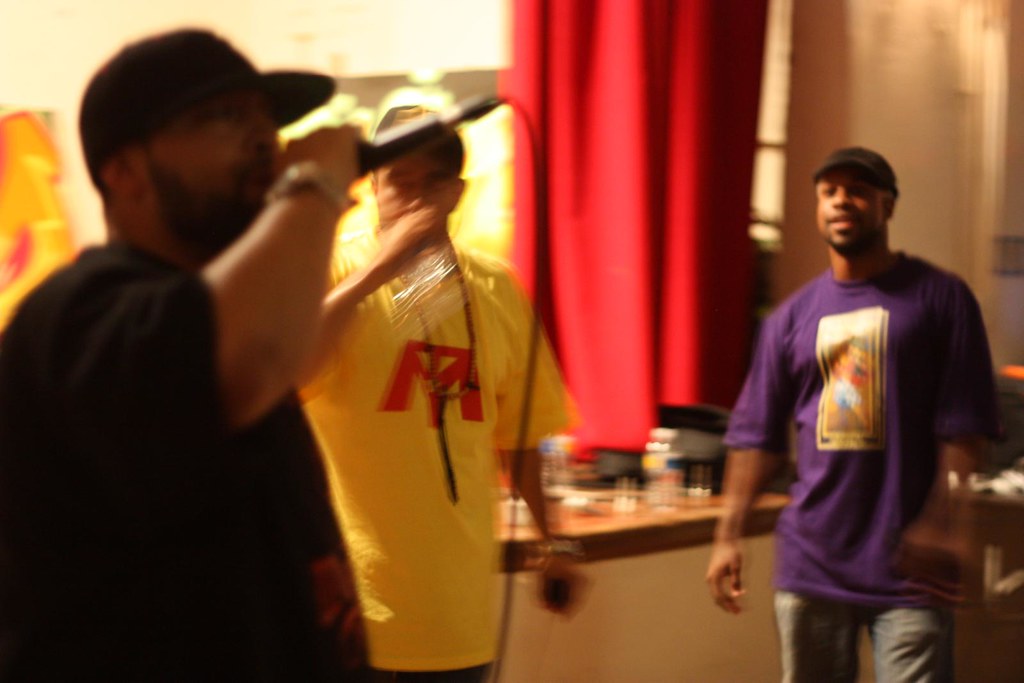




 bio
bio